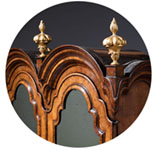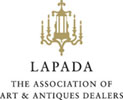A Rare and Important Charles II 17th Century Table Clock by Henry Jones
£85,000
Follow Us
A Rare and Important Charles II 17th Century Table Clock by Henry Jones
The Rare and Important 17th Century Spring Driven Table Clock by the Celebrated Maker, Henry Jones.
Provenance dating back to 1745. Owned by Captain Alexander Raitt
A very rare and unusual Charles II English eight-day spring-driven table clock signed on the backplate, Henry Jones in the Temple, dating back to the period c.1675-80.
The elegantly proportioned ebony-veneered oak basket top case, whose austerity goes straight back to East-style models, has extremely shallow mouldings and large rectangular viewing windows to the sides so that the movement is almost entirely visible. The case rests on four brass bun feet.
The fine square brass dial with matted centre and just winding holes has an applied silvered chapter ring and winged cherub-head spandrels in the corners. The chapter ring is engraved with a narrow outer minute ring within which are Arabic five-minute numerals and two different types of 7½-minute markers, a central ring with Roman hours I-XII and fleur-de-lys half-hour markers and an inner ring divided into quarter hours. The time is indicated by an elegant pair of finely pierced period blued steel hands. Above the XII is a strike/silent aperture with original switch.
The striking eight-day twin fusee brass movement, with six latched pillars, early fusees with open click work and verge escapement with a short knife-suspended pendulum. The striking, which is regulated by an internal rack, indicates the hours fully on a bell. The backplate shows the pre-setting ratchet wheels with typical clicks and a fine U-shaped click spring. It is profusely engraved in period style around a typical signature cartouche with the maker’s name: Henry Jones in the Temple. The movement has an unusual bar operated pull-quarter repeat on two bells differing in pitch, one for the quarters and the other the hour bell.
The maker
Henry Jones was born at Boulder near Southampton in 1634 and was apprenticed to the famous maker Edward East in 1654 through the Clockmakers’ Company. He was made free in 1663 but remained working for East until 1672, when he set up in the Inner Temple. Later he was recorded in the Inner Temple Lane. He was a prolific maker, his work being highly thought of. Apart from spring, lantern and longcase clocks, he also made watches.
Condition
Good. Repaired. Replacements made. Wear consistent with age and use. The repeat work was partly restored to the original pattern. Several missing parts were made in the correct style.
Dimensions
Height: 12.6 in (32 cm)
Width: 9.06 in (23 cm)
Depth: 5.91 in (15 cm)
Literature
B. Loomes, The Clockmakers of Great Britain 1286-1700, Ashbourne, 2014, pp.430-31.
B. Loomes, Watchmakers and clockmakers of the World, London, 2006, p.429.
Provenance
This clock is known as the Alexander Raitt clock. It was shipped from Scotland to America by Captain Alexander Raitt in 1745, sailing his own ship. Captain Raitt settled in Kittery in the province of Maine of the Massachusetts Bay Colony. On October 2, 1747, he married Miriam Frost (1722-1807), widow of Eliot Frost, a daughter of the Honourable John Frost of New Castle, New Hampshire.
The house where the Raitts lived is still in a good state of preservation in Kittery, now Eliot. It was built by Eliot Frost, Miriam’s first husband in 1740.
The clock, descending from father to son since it was brought over from Scotland and has been in the Raitt family until it was acquired by Miss Elizabeth Mehitable Bartlett of Eliot who presented it to her brother Ralph Sylvester Bartlett in 1939. It was still in his possession in 1941. It later went to his cousin John William Pepperrel Frost, who was the last owner, before we acquired the clock.
PREVIOUSLY SOLD
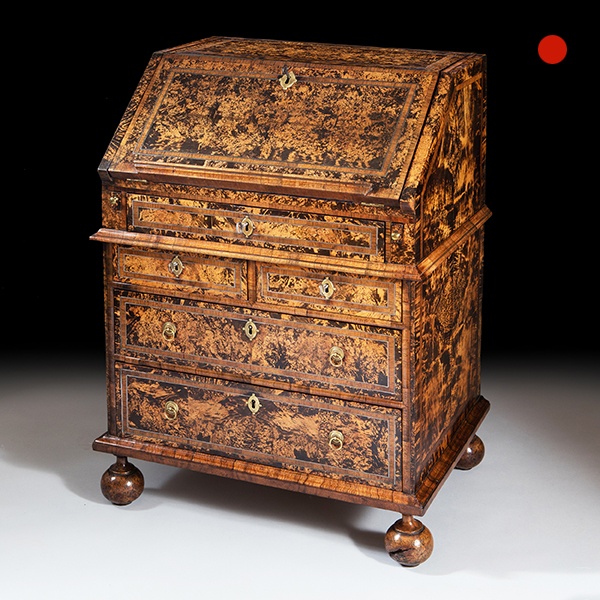
Queen Anne Mulberry Bureau Firmly Attributed to Coxed and Woster, circa 1710 England
Queen Anne Mulberry Bureau Firmly Attributed to Coxed and Woster circa 1710 England SOLD Follow UsQueen Anne Mulberry Bureau Firmly Attributed to Coxed and Woster, circa 1710 England This magnificent Queen Anne 'Mulberry Wood' (field maple) bureau of small proportion...
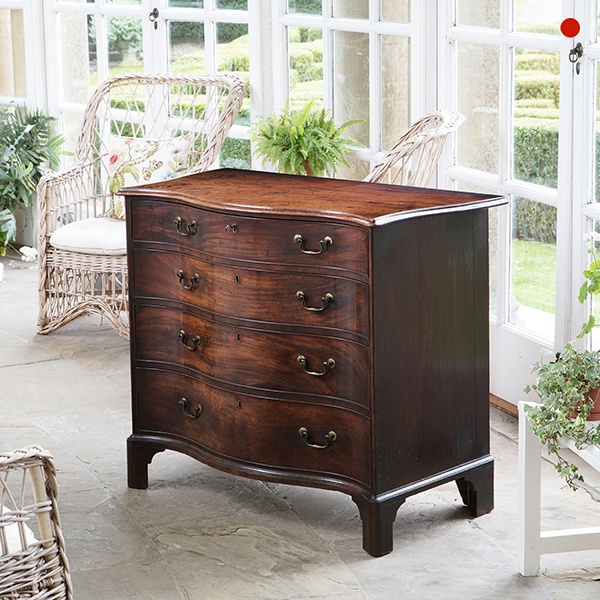
A fine George III mahogany serpentine chest of drawers in the manor of Henry Hill of Marlborough
A fine George III mahogany serpentine chest of drawers in the manner of Henry Hill. With ebonised, ogee moulded serpentine dovetail-housed top.
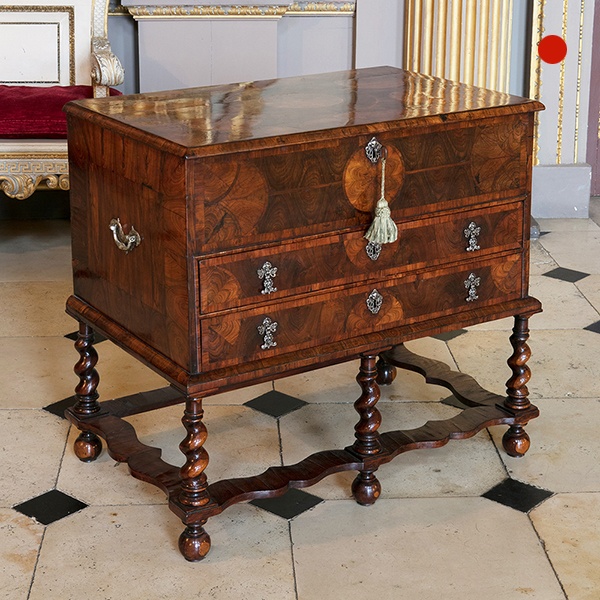
William and Mary Kingwood or ‘Princes Wood’ Oyster Table Box
William & Mary Kingwood Oyster Table Box or ‘Princes Wood’, Circa 1690. England. Originally designed to store tableware and was given the apt name ‘table box’.
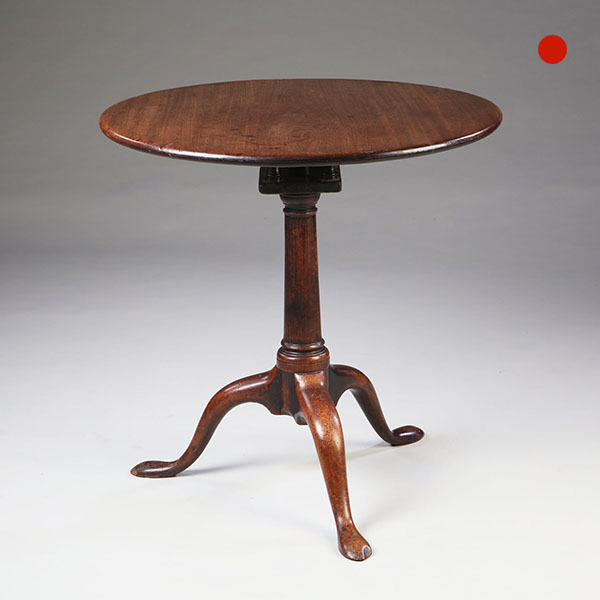
George III Mahogany Tripod or Snap
George III Mahogany Tripod Table or Snap-Top Table with Birdcage circa 1770. England SOLD Follow UsGeorge III Mahogany Tripod or Snap-Top Table with Birdcage, circa 1770. England Of solid mahogany, the gun barrel and one-piece top are raised...
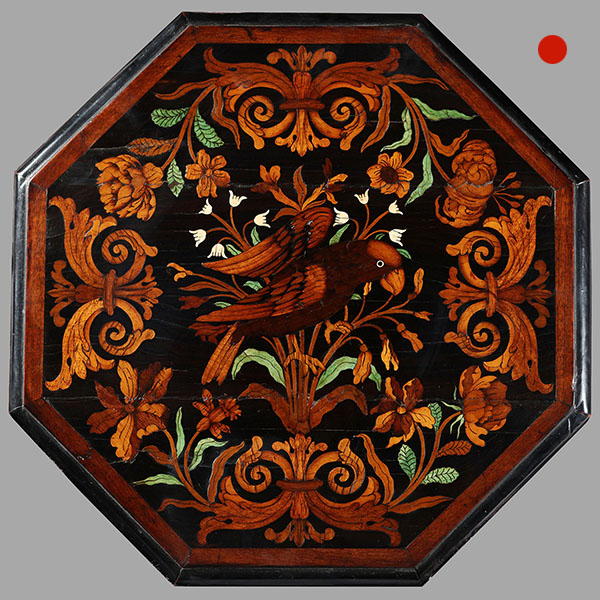
17th-Century Floral Marquetry Candle Stand
17th-Century Floral Marquetry Candle Stand, 1675-1690. The Metropolitan Museum of Art in New York decided to auction a number of pieces of exceptional merit.
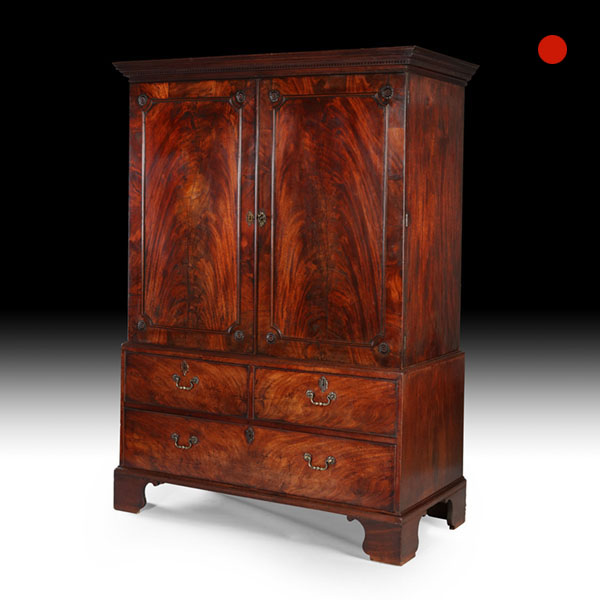
George III Mahogany Linen Press Wardrobe
George III Mahogany Linen Press Wardrobe 1760 England SoldGeorge III Mahogany Linen Press Wardrobe A fine George III mahogany linen press in outstanding original condition. The press was obviously made to exceed with the cabinetmaker using...

Queen Anne Mulberry Bureau Firmly Attributed to Coxed and Woster, circa 1710 England
Queen Anne Mulberry Bureau Firmly Attributed to Coxed and Woster circa 1710 England SOLD Follow UsQueen Anne Mulberry Bureau Firmly Attributed to Coxed and Woster, circa 1710 England This magnificent Queen Anne 'Mulberry Wood' (field maple) bureau of small proportion...

A fine George III mahogany serpentine chest of drawers in the manor of Henry Hill of Marlborough
A fine George III mahogany serpentine chest of drawers in the manner of Henry Hill. With ebonised, ogee moulded serpentine dovetail-housed top.

William and Mary Kingwood or ‘Princes Wood’ Oyster Table Box
William & Mary Kingwood Oyster Table Box or ‘Princes Wood’, Circa 1690. England. Originally designed to store tableware and was given the apt name ‘table box’.

George III Mahogany Tripod or Snap
George III Mahogany Tripod Table or Snap-Top Table with Birdcage circa 1770. England SOLD Follow UsGeorge III Mahogany Tripod or Snap-Top Table with Birdcage, circa 1770. England Of solid mahogany, the gun barrel and one-piece top are raised...

17th-Century Floral Marquetry Candle Stand
17th-Century Floral Marquetry Candle Stand, 1675-1690. The Metropolitan Museum of Art in New York decided to auction a number of pieces of exceptional merit.

George III Mahogany Linen Press Wardrobe
George III Mahogany Linen Press Wardrobe 1760 England SoldGeorge III Mahogany Linen Press Wardrobe A fine George III mahogany linen press in outstanding original condition. The press was obviously made to exceed with the cabinetmaker using...
YOU MAY ALSO LIKE
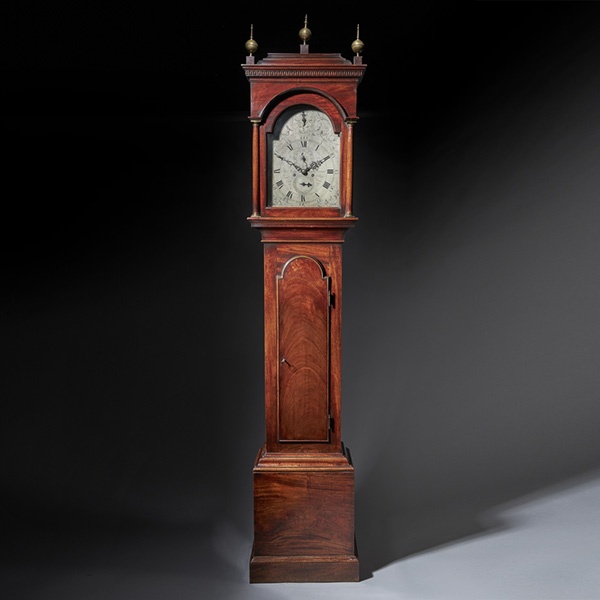
Fine George III 18th Century Period Mahogany Longcase Clock by Tomas Fowle
18th Century Period Mahogany Longcase Clock by Tomas Fowle £12,995 Follow Us18th Century Period Mahogany Longcase Clock by Tomas Fowle A fine George III period mahogany longcase clock of excellent colour, patination and proportions, circa...
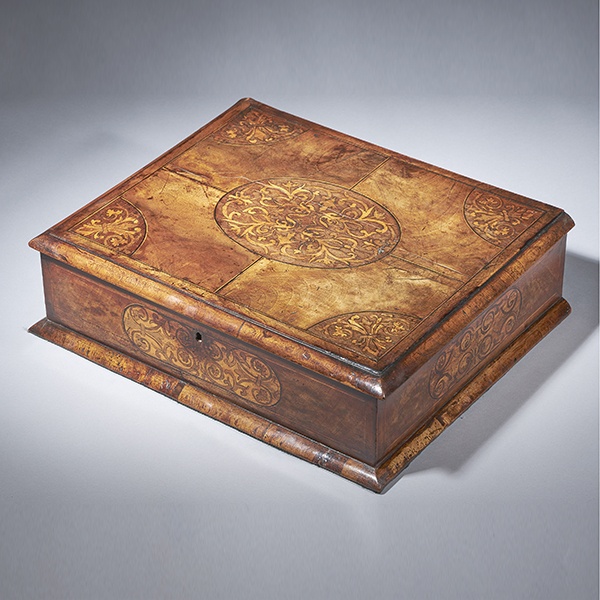
17th Century Figured Walnut and Seaweed Marquetry Lace Box
17th Century Figured Walnut and Seaweed Marquetry Lace Box £3,600 Follow Us17th Century Figured Walnut and Seaweed Marquetry Lace Box A fine and extremely rare figured walnut and seaweed marquetry 'lace box', circa.... let’s break it down -...
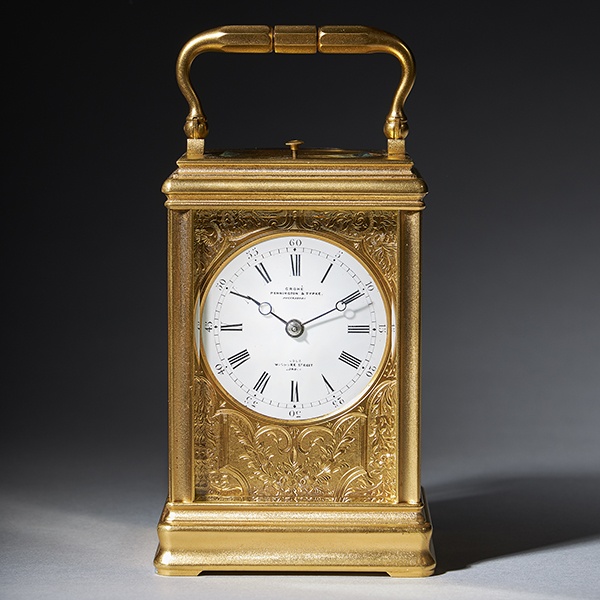
19th Century Repeating Gilt-Brass Carriage Clock by the Famous Drocourt
19th Century Repeating Gilt-Brass Carriage Clock by the Famous Drocourt £5,600 Follow Us19th Century Repeating Gilt-Brass Carriage Clock by the Famous Drocourt A superb repeating carriage clock with a gilt-brass gorge case by the famous maker...
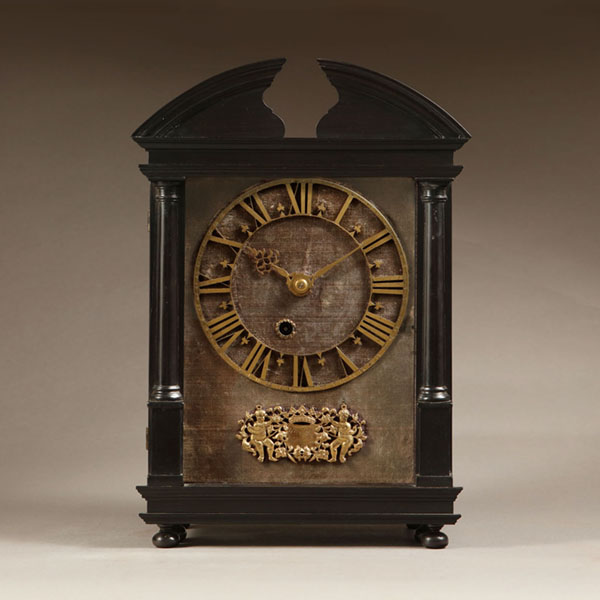
17th-Century Hague Clock Signed by Pieter Visbagh, circa 1675
Small 17th Century Hague clock made c. 1675 by Pieter Visbagh, who was apprenticed by Salomon Coster. The latter made the first pendulum clock according to the instructions of Christiaan Huygens, the internationally renowned scientist who developed the idea of applying a pendulum to a clock movement.
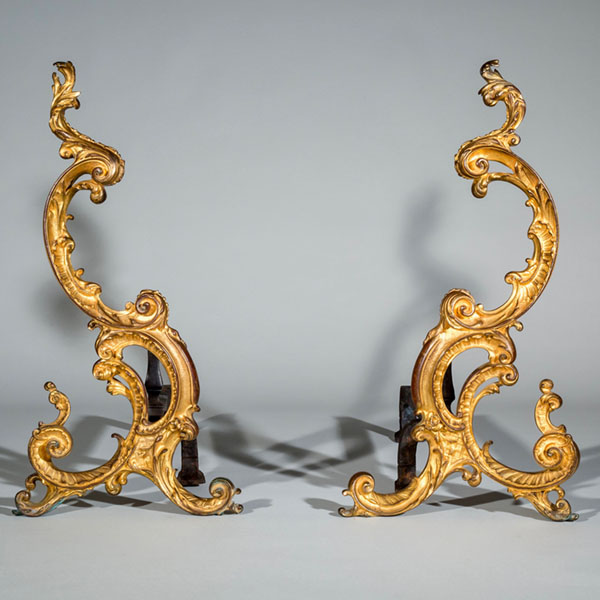
Pair of 18th-Century English Rococo Gilt Bronze Andirons or Firedogs
An exceptional pair of 18th century English Rococo gilt bronze andirons or fire dogs.
The bold shape of these andirons relate to designs of Thomas Johnson (1714–1778), one of London’s pioneers of the ‘Modern’ or French style, later known as Rococo.
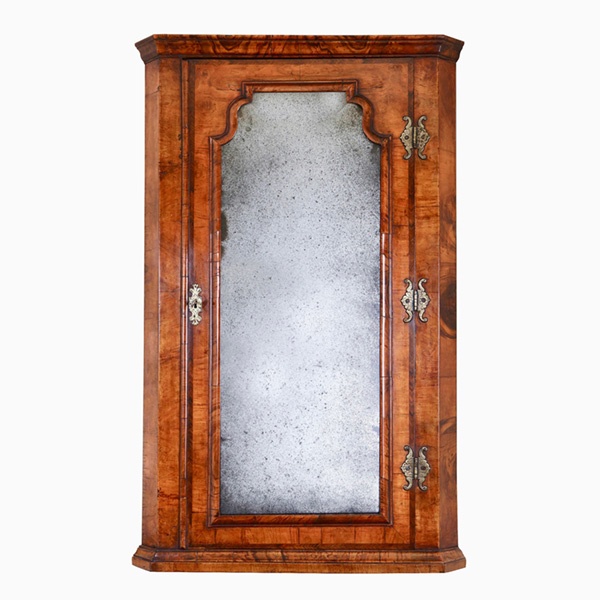
Queen Anne Walnut Corner Cupboard with Bevelled Mirror Plate
A truly remarkable find in original condition. To the door a shaped soft bevelled mirror plate is framed by a cross-grain molding of typical queen Anne design which is further cross-banded, feather-banded and edged to the opening with a single de-molding.

Fine George III 18th Century Period Mahogany Longcase Clock by Tomas Fowle
18th Century Period Mahogany Longcase Clock by Tomas Fowle £12,995 Follow Us18th Century Period Mahogany Longcase Clock by Tomas Fowle A fine George III period mahogany longcase clock of excellent colour, patination and proportions, circa...

17th Century Figured Walnut and Seaweed Marquetry Lace Box
17th Century Figured Walnut and Seaweed Marquetry Lace Box £3,600 Follow Us17th Century Figured Walnut and Seaweed Marquetry Lace Box A fine and extremely rare figured walnut and seaweed marquetry 'lace box', circa.... let’s break it down -...

19th Century Repeating Gilt-Brass Carriage Clock by the Famous Drocourt
19th Century Repeating Gilt-Brass Carriage Clock by the Famous Drocourt £5,600 Follow Us19th Century Repeating Gilt-Brass Carriage Clock by the Famous Drocourt A superb repeating carriage clock with a gilt-brass gorge case by the famous maker...

17th-Century Hague Clock Signed by Pieter Visbagh, circa 1675
Small 17th Century Hague clock made c. 1675 by Pieter Visbagh, who was apprenticed by Salomon Coster. The latter made the first pendulum clock according to the instructions of Christiaan Huygens, the internationally renowned scientist who developed the idea of applying a pendulum to a clock movement.

Pair of 18th-Century English Rococo Gilt Bronze Andirons or Firedogs
An exceptional pair of 18th century English Rococo gilt bronze andirons or fire dogs.
The bold shape of these andirons relate to designs of Thomas Johnson (1714–1778), one of London’s pioneers of the ‘Modern’ or French style, later known as Rococo.

Queen Anne Walnut Corner Cupboard with Bevelled Mirror Plate
A truly remarkable find in original condition. To the door a shaped soft bevelled mirror plate is framed by a cross-grain molding of typical queen Anne design which is further cross-banded, feather-banded and edged to the opening with a single de-molding.
